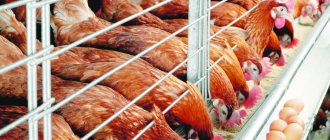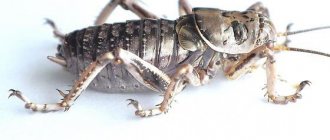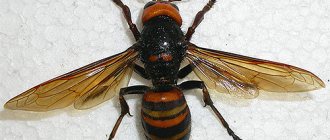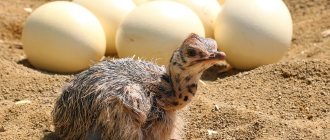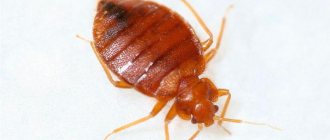Poultry farming is a branch of livestock farming whose task is to breed poultry. The main areas of poultry farming are egg and meat. By-products: fluff and feathers. Chicken eggs are mainly of nutritional value, for the production of which it is advisable to breed chickens for egg production. In meat poultry farming, chickens of meat breeds and lines, ducks, turkeys, geese, and less often guinea fowl and quail are used.
Poultry farming is the fastest growing branch of livestock farming. It is capable of providing a rapid and sharp increase in the production of valuable products. A bird gives a person eggs, meat, fluff, and feathers. At the same time, significantly less feed, money and labor are spent per unit of production than in other livestock sectors.
Modern industrial poultry farming has reached a qualitatively new level. Both around the world and in our country, targeted breeding work is being carried out to increase the potential, both in meat and egg production. Poultry has the highest efficiency of converting plant protein into animal protein, comparing favorably with cattle and pigs in this indicator.
Possessing unique qualities of self-sufficiency, the bird impresses with very high rates of intensification. When producing one kilogram of egg mass or broiler meat, the feed conversion is less than two units; to produce one kilogram of pork, 4-5 kg of feed is required, beef 7-10 kg. The amount of egg mass obtained from a quail per year exceeds its body weight by 23-25 times, in chickens by 8-9 times.
Indicators of food protein production per unit of live weight in laying hens are 8-10 times higher than the corresponding indicator for cows with a milk yield of 8 thousand liters per year.
The poultry industry is one of the most important components of the Russian agro-industrial complex. Currently, there are more than 1,500 poultry farms in various regions of our country. Starting from the Far East to Kaliningrad, Murmansk and Sochi, in every region, territory, republic, dozens of poultry farms have been built and operate, which are suppliers of not only dietary food products, eggs and poultry meat, but also feather raw materials for light industry, environmentally friendly and highly effective organic fertilizers for farmers.
The construction of multi-storey poultry buildings, the concentration of large numbers of livestock in limited areas, the specialization of poultry farms by type and age of birds, the method of keeping them (cage, floor, combined), all this led to the need to develop a wide network of infrastructure in order to create not only favorable conditions for life support of poultry, maximum production of poultry products, but also its deep processing. Our country has built modern factories for the production of special equipment and machines, units and various mechanization equipment by type of work. Starting from feed production to processing of poultry products and waste.
In Russia at present there are many poultry farms, which, based on the forms and methods of organizing the production process, without exaggeration, can be classified as powerful industrial enterprises, such as, for example, car production. The only difference is that, for example, VAZ products produce about 2,000 passenger cars per day, and the Borovskaya poultry farm in the Tyumen region sends about two million eggs and up to 10 tons of dietary chicken meat to the retail chain every day.
Poultry farming occupies an important place in providing the Russian population with high-quality dietary products - eggs and poultry meat. Chicken eggs contain many nutrients and biologically active substances necessary for humans, which are in optimal proportions. 12-15% protein, 11-15% fat, 1% carbohydrates, 74% water and about 1% inorganic substances. The nutritional value of an egg is about 75 kcal. The highest quality poultry meat is obtained from broilers - hybrid young meat of all types of poultry, obtained through specialized rearing. White poultry meat contains more than 20% complete proteins.
In the old days they said that a poor man eats chicken only in two cases: when he himself is sick or when the chicken is sick. Tender and tasty chicken meat has always been considered an expensive delicacy. But now, when poultry farming has developed so much, both chicken and other poultry meat are available to the majority of the population.
Chickens, as well as ducks, geese and turkeys, began to make up our daily food, and in stores they often sell not adult birds, but chickens raised in an accelerated way - the so-called broilers.
Another important poultry product is chicken eggs. According to the standard, they are divided into two groups: dietary (weighing more than 44 g, sold within 7 days after laying - the date is marked on the surface of the shell) and table eggs (formerly dietary, after 7 days of storage, and any other fresh eggs). Eggs weighing less than 43 g cannot be sold in stores. Of other eggs, only quail eggs are allowed to be sold; Goose and duck meats are prohibited from being sold in stores and markets due to the risk of infection with salmonella.
The most valuable nutritional component of eggs and poultry meat is, of course, protein. In eggs it contains an average of 12.7%, in broiler meat, depending on the category, - 17.6 - 19.7%, in chickens - 18.2 - 20.8%, in geese - 15.3 - 17 .0%, in turkeys - 19.5 - 21.6%, in ducks - 15.8 - 17.2%, in quails - 18.0%. The amino acid composition of poultry meat, as can be seen from the table, is favorable; there is usually no shortage of essential amino acids. But the amino acid composition of egg whites is most balanced. At one time it was accepted by the FAO as a “standard” protein for comparison.
As for fats, as a rule, there are much more of them in the meat of waterfowl. For comparison: in broilers, fat content ranges from 5.2 - 14.4%, in goslings of similar age - 26.5 - 27.5%, in ducklings - 20.3 - 26.6%. Accordingly, for chickens - 8.8 - 18.4% and turkeys - 12 - 22%, while for geese - 27.7 - 39.0% and ducks - 24.2 - 38.0%. A chicken egg contains an average of 11.5% fat.
Table 1.1. Nutritional value of ready-made poultry and egg dishes per 100 g of edible portion (in parentheses - the approximate share of the daily requirement, %)
Poultry farming
As for meat, it is obtained from all types of poultry. Of course, the basis of poultry meat farming is broilers - the undisputed leaders in meat production among all birds. Such rapid growth is ensured by saturated feeding of artificially bred broiler chicken breeds.
It is worth noting among the chickens the guinea fowl. Guinea fowl is a meat breed of chicken that differs from its relatives in its pronounced taste, similar to partridge. It is for their tender, nutritious meat that guinea fowl are valued among poultry farmers.
But the leaders in terms of weight are turkeys. The weight of an adult turkey can reach 20 kg, and on average it is 10-17 kg, while turkeys weigh about 7-9 kg.
Geese lost their palm in terms of breeding volumes only to chickens. Geese are bred to produce meat, which is distinguished by its taste, as well as feathers and down.
Quail have become popular recently due to the dietary qualities of both meat and eggs. This is a fairly promising branch of poultry farming, which has yet to develop.
Ducks are less popular among poultry farmers despite the high quality of meat and eggs. The fact is that to raise ducks, you need a pond, and not every amateur poultry farmer can afford this. In addition, ducks are “famous” for their gluttony. However, this is not entirely fair, because a good appetite is the key to rapid growth, and fast growth is the main goal of poultry farming.
Ostriches, partridges and even pheasants are also successfully bred in Russia.
Arrangement of premises and purchase of equipment
A room for chickens can be purchased, rented, or arranged independently. The easiest option is the last one. This will allow you to eliminate a significant portion of your expenses. Setting up a chicken coop is quite simple. Any utility room of sufficient size is suitable for a newly created “live” workshop. There are generally accepted norms and rules of arrangement, compliance with which is mandatory. These include:
- Sufficient space.
- Ventilation system.
- Presence of a perch.
- Places for feeding and drinking.
- Nests for laying eggs.
If the number of individuals is very large, they will begin to lay eggs worse and behave aggressively.
In this case, you will lose profit. The ventilation of the room will also be disrupted. Let us remind you that one chicken needs up to 4 m2 of fresh air every hour. There is no need to make a very high and low perch. Its dimensions should not exceed 1.2-1.5 m. If it is very high, then adult individuals will injure themselves falling from it. And if it is too low, then this will not create a comfortable physiological position at night, which will also affect egg production. You will also need a place to store feed.
The above method of keeping is the simplest and will be used along with free-range poultry farming. If you have broader plans, you will have to purchase cages, conveyor equipment, expert-class lighting fixtures and much more.
Features of poultry farming and its differences from other industries
Unfortunately, in modern Russia, small poultry farms cannot compete in the market in terms of profitability with large monopoly poultry farms. There are several reasons for this: high costs for equipment, feed, fuel, and electricity. Not every poultry farm can count on payback and stable profitability.
However, there is a way out. With rising income levels and people's increased attention to the quality of the products they buy, more and more consumers are abandoning artificially raised broilers and opting for farm birds raised on natural feed without the use of additives, growth activators and antibiotics. And what is good news is that retail chains and restaurants are joining the number of such buyers.
In such a situation, a private producer has the opportunity to create an organic poultry farm and find its buyer. And the prices for such birds on the market are higher than for industrially raised ones, so the costs will be recouped if you approach the matter correctly.
For personal subsidiary farming, poultry farming can even become a means of saving money. The fact is that birds, in particular chickens, are practically omnivores and can eat any table scraps and food waste. Thus, by raising, for example, chickens, you can not only use leftovers that were previously simply thrown away, but also always have fresh, organic eggs and meat on your table.
Poultry farming does not require the same material and physical costs as, for example, raising cattle or pigs. Therefore, the development of both small and large-scale poultry farming can have a positive impact on economic development, especially if the increase in production volumes allows the export of poultry products.
Moreover, all the prerequisites for the development of poultry farming in our country exist: the amount of free space that can be adapted for poultry breeding is simply off the charts.
But along with favorable conditions, there are also problems in poultry farming. For example, to successfully raise poultry, the farm requires veterinarians on staff, and if the poultry population is large, several. But there are not enough specialists, and not every available veterinarian is willing to work for the money that poultry farms can afford to pay. And the development of veterinary medicine itself in the field of poultry farming leaves much to be desired. The development of new effective vaccines is necessary.
Poultry meat quality: how is it assessed?
Farm, village, home: confused about the terminology? Which one is organic? What are the differences between “farm” and industrial chicken? Most organic poultry is produced on small-scale poultry farms, where optimal conditions are created for the birds and high-quality feed that does not contain GMO residues and pesticides is provided. All over the world, if a small-scale producer wants to produce organic chicken, then he must comply with the strict requirements of organic poultry farming standards and must undergo regular monitoring by an independent organization authorized to certify organic production.
In Russia, where producers and consumers are not yet very familiar with the rules of organic production and in particular poultry farming, any, including industrial, production, farming, private farmsteads refer to the chicken meat they produce with the concepts Eco, Bio, farm, village, home and even organic. Often small-scale chicken producers comply with the rules and standards for organic production. Sometimes producers combine industrial poultry farming methods with organic ones, for example, when keeping them outside cages, feeding “domestic” poultry with special premixes containing antibiotics and feed containing GMO soybeans and corn, and often passing off ordinary industrial chicken meat as “eco”, “bio”, “farm” using consumer requests for more environmentally friendly and cleaner products.
It is not possible for the consumer to verify and check on the label the “organicity” of the methods of keeping feed, premixes, and treatment of poultry, therefore, throughout the world, the task of monitoring and verifying compliance with the rules of organic poultry farming is entrusted to accredited control organizations competent in organic standards, in one of The author of the article works in such accredited companies.
In Russia, the consumer does not yet have confidence in the organic certification institute and is ready to trust advertising, statements of manufacturers and sellers. At the same time, producers and sellers are often unaware of the existence of special standards for growing organic poultry.
So, organic producers:
- use only high-quality own or purchased organic feed WITHOUT pesticides and GMOs
- create conditions as close to natural as possible (each individual has at least 4 m2, walking on grass-covered areas, as well as perches, perches and nests)
- never use cage keeping methods
- thanks to the created conditions (close to natural and high-quality feed), it is guaranteed that antibiotics, prohibited premixes, hormones and growth stimulants are NOT used for preventive purposes
- Every year they undergo inspection control, which checks the feed used, veterinary drugs, premixes, living conditions, as well as accounting documentation
Prospects for poultry farming
The future of poultry farming is private poultry farming enterprises that are well equipped both technically and economically. Having a sufficient technical base and a sensible marketing approach, a poultry farm can produce up to hundreds of products: from banal meat products and semi-finished products to dietary and baby food.
Investments and clear planning of funds in the poultry industry can bring excellent dividends, despite the initial “frightening” prospect.
Poultry farming is the future of Russia; it is an area of agriculture that is at the starting point of development in our country. But this makes the prospects for poultry farming even more attractive.
Chickens
In poultry farming at home, you can’t do without chickens, because this activity is very interesting and profitable. Let's look at a few features that will help you achieve good results. This option is suitable for beginners who want to receive additional income into their home budget.
For poultry farming to become successful, you need to engage in bird breeding - this means selecting birds according to the characteristics that suit you most. The most important points are: chicken health, physical development and productivity capabilities.
As for the decorative qualities of the breed, this is a purely personal choice. Fortunately, there is a choice of colors and exterior. Also, do not forget about certain breed characteristics that you need to adhere to if you plan to breed birds and sell them. You can also take purebred animals with you to exhibitions.
It is recommended to avoid inbreeding as this may affect the health of the hens. In some cases, such matings are allowed, but only to strengthen certain breed characteristics.
Having taken up poultry farming at home, you should know that when using small and light chickens, which are mainly for egg production or decorative purposes, to form a parent flock, you need to use a ratio of 1 to 10, that is, 1 rooster for 10 chickens. When breeding larger breeds, which include meat, fighting and meat-egg breeds, a ratio of 1 to 6 is used. According to research, after mating, a chicken can lay an already fertilized egg. The best results are achieved on the 4th day of keeping a female and a male together. Sperm can remain in the hen’s body for about 3 weeks, even if the rooster is hatched immediately after fertilization, the hens will be able to lay fertilized eggs during this period.
You should collect eggs for incubation after three weeks of cohabitation of the individuals you want. Otherwise, the eggs may be fertilized by another rooster (random or retired).
In the case of purchasing eggs for incubation, you need to ask the breeder how long the parent flock lived together.
You should know that chickens love to lay eggs in a certain place that they have fallen in love with and chosen. The poultry farmer must prepare a nest for laying hens in advance; if you ignore this action, you will have to look for eggs throughout the area, and they will be dirty.
If you seriously decide to achieve good results, it is recommended to immediately purchase a good incubator. Despite the fact that chickens have well-developed maternal instincts, the entire process may depend on various factors and cases. With the help of an incubator, activities can be clearly planned.
For more details, see the Chickens section on our website.
History of poultry farming as an industry
Poultry farming in Russia as an industry began to take shape in the 20s of the 20th century. The first collective and state farms appeared, where they began to purposefully raise poultry. Before this, poultry farming was not considered a profitable industry. Quite the contrary, petty and unpromising. Chickens and geese were raised only by peasants on their personal farmsteads.
Then the Great Patriotic War causes serious damage to the entire economy of the country. Poultry farming begins to recover only in the late 50s and early 60s. Specially bred breeds of chickens are imported into the USSR from abroad. And by the beginning of the 90s of the last century, the poultry industry reached the peak of its development and the volume of products produced.
The change of regime in the country and perestroika in the 90s again throw this industry far back. Most farms go bankrupt and close. There is no funding, the equipment is worn out, there is practically no breeding production, sales have been destroyed. Only a small part of them survive. But, starting in the 2000s, poultry farming begins to develop and gain momentum again. Rapid construction of new enterprises is taking place, and old poultry farms are being modernized. Innovations are being introduced everywhere, business and production connections are being established.
general information
If the owner has chosen to raise poultry, then it requires an additional extension, which is called a poultry house. You cannot do without additional equipment in the form of:
- Feeder.
- Drinking bowl.
- Perches.
- A special room where animals will roam.
Elevated areas located on sandy soil are most suitable for the construction of poultry houses. The number of birds that are planned to be kept determines the area of the site along with the size of the poultry house. It is believed that 1 square meter is enough for 3-4 adult animals. This area can be occupied by:
- 3-4 chickens.
- 1 turkey.
- 3 ducks.
- 1 goose.
6 meters of floor space is needed for those who plan to raise at least 20 chickens and three ducks. This is enough for a great start. To build poultry houses, you can use any materials that are at hand. It is not necessary that the structure be capital or expensive. Any solution is suitable:
- Clay.
- Various types of construction waste.
- Gorbyl.
- Boards.
- Logs.
- Brick.
- Stones.
Brick buildings are the most durable. But they have a drawback - they are very cold. The walls will be too damp in winter, which will lead to illness in the bird. In hot climates, stone is preferred. Under such conditions, adobe and adobe options are also relevant. The main thing is not to forget that poultry farming also requires a business plan.
Poultry farming in Russia
Russian poultry farming in recent years has shown steady growth and development of the entire industry as a whole. It makes a significant contribution to the country's economy, which also indicates good prospects for the future.
Poultry farms in the Russian Federation breed about 17 egg breeds of poultry and 11 meat breeds. Our own breeding production has appeared and is developing. The country's leading breeds are those bred directly by domestic breeders.
In Russia, poultry farming consists of:
- more than 650 industrial organizations
- 425 factories producing egg products
- 130 factories are engaged in broiler breeding
- 50 companies are engaged in the breeding industry
- 12 farms specialize in raising geese
- 9 farms exclusively breed ducks
- 5 are engaged in turkeys
- 3 – quail
Gross production reaches fifty-five billion eggs and approximately two million tons of poultry meat.
Links[edit]
- "Definition of AVICULTURE". www.merriam-webster.com
. Retrieved March 2, 2022. - "Poultry Society". Poultry Society
. Retrieved December 16, 2022. - "Foreign Bird League (FBL): History of the League". League of Foreign Birds
. Retrieved December 16, 2022. - "Our History - Aviculture Society of America". www.asabirds.org
. Retrieved December 16, 2022. - "Welcome to the Poultry Society of South Australia". www.birdkeepinginaustralia.com
. Retrieved December 16, 2022.
Poultry farming in Russia by region
Poultry farming in Russia as a whole is widespread in all districts and regions. Chickens are very unpretentious and can live normally in any climate zone. But even this is not the main thing. Modern technologies make it possible to build poultry complexes even in the Far North. Now it doesn’t matter at all what the climate is like. Poultry complexes are built from modern heat-insulating materials. Indoor automation creates ideal conditions for rapid growth and weight gain. Even sunlight is not used when keeping birds in cages. The computer controls artificial sunrise and sunset programs to speed up metabolism and speed up the growth of the herd.
Perhaps, now the main criterion for opening a poultry farming enterprise is the presence of a number of large settlements for marketing products and reducing transport costs.
Purchasing young stock
A business plan for breeding these birds provides for an initial calculation of the number of heads.
Beginners are recommended to purchase several dozen chickens to familiarize themselves with the features of the enterprise. The quantity must be calculated based on the availability of useful square footage of the premises. Poultry farming standards provide for the placement of 20 birds per 10 m2 or 7 chickens in one cage. For every 10 females, one rooster is purchased. It is recommended to choose meat-egging breeds at the start of your activity. This will diversify your risks and in the event of unfavorable market or other factors, you can simply sell your birds for meat.
Meat breeds
- Orpington.
- Faverolles.
- Wyandotte.
- Australorp.
- Amroks et al.
Leading regions
Each poultry farm or poultry farming enterprise has its own specification. Some focus on meat production, others on egg production, and others on incubation. The bulk of poultry raised is chickens, but there are leaders in the production of other types of poultry meat.
- Large poultry enterprises that were able to survive all crises and other unfavorable economic factors are located in the following regions: Belgorod, Kostroma, Vologda, Novosibirsk, Tyumen, Altai Territory and Udmurtia.
- New large poultry farms have opened in the Leningrad region, Smolensk and Sakhov regions.
- The Smolensk and Irkutsk regions, through innovation and the transition to extruded feed, significantly increase the productivity of enterprises while reducing costs.
- The Ryazan, Pskov, Smolensk and Arkhangelsk regions significantly reduced meat production and began to specialize in egg production.
- The Kurgan region specializes in waterfowl - they mainly raise geese and ducks.
- Bashkortostan has become a leader in the breeding and production of turkey meat. Their products occupy a large share of the industry's total annual volume. The Rostov region takes a worthy second place in turkeys.
- The Moscow region specializes in breeding guinea fowl.
- The leaders in quail production are also the Moscow region and the Stavropol region.
- Chelyabinsk and Tomsk regions are leaders in egg incubation volumes. Their production volumes approach 60 million chickens per year.
Main directions
The main products of poultry farming are traditionally meat and eggs. In Russia, as well as throughout the world, the consumption of poultry meat is increasing for several reasons. It is high in calories, quickly absorbed by the body, suitable for children's and dietary nutrition, which meets the growing interest in a healthy lifestyle.
Meat direction
Most of the poultry flock is raised for slaughter: chickens, geese, turkey, duck. The undisputed leader in meat poultry farming is broiler chickens; their breeding is the most economically profitable. The period of fattening individuals to a marketable weight of 1.7–1.9 kg is only 60–70 days, and the stocking density reaches 30 animals per 1 sq. m.
In terms of meat yield, turkey and goose are not inferior to broilers, but the technology for keeping chickens can easily be automated, which is responsible for the mass industrial production of this breed of bird. Meat is sold in all types:
- 45% - in the form of a chilled, frozen carcass;
- 25% - natural semi-finished products;
- 30% - sausages, canned goods, ready to eat.
Egg production
In this direction, chickens again hold the palm. Chicken eggs are used both in their natural form and are an indispensable ingredient in the bakery, fat-and-oil and confectionery industries. One laying hen produces 250–300 eggs per year, and the laying period begins in the 5th month of rearing.
Goose eggs are not widely consumed as food in Russia, but quail eggs are increasingly appearing on shelves and are in demand among gourmets. Like quail meat, it is especially in demand in the restaurant business.
The distribution of egg production across the country is heterogeneous. Along with the regions where there is “overstocking” (Belgorod, Kostroma, Yaroslavl regions, Mordovia), there are places experiencing a shortage of eggs. The prospects for breeding laying hens are quite good in the Far East, Altai, Buryatia, Arkhangelsk, Kurgan regions and the northern regions of the country.
Map of self-sufficiency of domestic demand for eggs by region. According to a study by the Institute of Agrarian Problems (VIAP)
Breeding
Good breeding material is the basis of business. The entire subsequent cycle of meat and egg production depends on it: the percentage of rejection, high hatchability, the presence/absence of veterinary pathologies, the birth of strong and viable chickens. Therefore, in addition to fattening poultry for slaughter, raising chickens for sale will also be a promising business.
With regard to broilers, almost all breeding is based on foreign crosses. The farms are dominated by breeds of meat chickens from the USA (Ross, Purline, Cobb), from France (Hubbard Isa) and others. They are characterized by a high growth rate and lower feed consumption. Most farms first purchase 10-day-old chickens, and subsequently keep their own breeding flock, updating it by hatching chicken eggs in an industrial incubator.
The genetic potential of all foreign meat crosses grown in Russia is almost the same: live weight 2.4–2.6 kg, average daily gain 60–62 g, feed costs 1.6–1.7 kg, slaughter yield 70–71 percent .
Approximate prices for hatching eggs and chicks
| Bird species | Egg, rub/pc. | Day old chicks, rub/pcs. |
| Meat broiler chickens (KOBB -500) | 20–25 | 40–45 |
| Egg breed chickens (Hisex brown) | 19–23 | 50–60 |
| Geese | 70–100 | 180–250 |
| Ducks | 35–85 | 60–120 |
| Turkeys | 150–170 | 230–280 |
* Prices according to the portal Agroserver.ru for February 2022, significantly depend on the breed of birds.
By-products
The use of poultry is not limited to obtaining only meat and eggs. All farms, including farms, try to make maximum use of all products of its vital activity. Thus, waterfowl are a source of feather-down raw materials, and its price on the world market exceeds $4 per kilogram. Moreover, there are technologies for intravital plucking, which makes it possible to obtain about 100–150 g of fluff from one duck and up to 700 g from a goose throughout its life. The profitability of the operation is about 250%.
Other by-products from poultry farming: organic fertilizers (solid and liquid); meat and bone meal, feather meal, blood meal. Flour is obtained by recycling dead livestock and processing waste. The selling price of these production products is, as a rule, 30–40% higher than cost.
Results
The poultry industry experienced unprecedented growth in the early nineties. During the year, 35 billion eggs and 1,700 tons of meat were produced. Then, by the beginning of the 2000s, it practically fell into decline due to a change in the political regime in the country. Modern Russian poultry farming has largely recovered from the crises. It is steadily developing and modernizing.
In a couple of decades, Russian poultry farming has every chance to become the leading agricultural industry in the country and fully cover the needs for food products such as eggs and poultry meat.
Poultry meat quality: conclusion
Real “farm”, “village” chicken from a conscientious small-scale producer, most likely meets most of the rules of organic poultry farming
Without proper independent oversight, producers may even unintentionally mislead consumers without knowledge of organic production standards. The quality of such a product can certainly be higher than an industrial one. But such a “statement” can only be taken at its word. Are you ready to risk the health of your loved ones?
Is the quality of the poultry meat you buy important to you? Then read the continuation: how to choose and where to purchase a quality product
poultry farming
POULTRY FARMING , agricultural breeding birds; the industry is alive. Basic P. products - food. eggs and meat; side - fluff, feather. Waste from poultry slaughter and processing is used to produce feed meal; bird droppings are a valuable organic product. fertilizer. Food eggs get ch. arr. from chickens of egg breeds and crosses, in smaller quantities - from meat-egg and meat chickens. For meat production, meat chickens, ducks, turkeys, geese, guinea fowl, and meat pigeons are bred. Basic The source of poultry meat is the raising of broilers. Delicious eggs and meat are also obtained from quails.
P. originated in India, where approx. 4 thousand years ago, chickens were domesticated, which then gradually spread to other countries. Later, other bird species were domesticated. In the 18th-19th centuries. In Europe, Asia and America, many agricultural breeds have been created. birds. In Russia, until 1917, poultry breeding was mainly carried out by to the cross. farms containing low-productive poultry. Development of P. as an industry. x-va began in the 20s. from the organization of the first poultry farms and hatchery poultry stations; in the beginning. 30s poultry farms began to be created - the first intensive poultry enterprises, as well as collective farms. poultry farms. In 1964 the Central Committee of the CPSU and the Soviet Union. Min. The USSR adopted a post on the organization of production of eggs and poultry meat in the industry. basis. In the system of the State Agricultural Industry of the USSR (1985) there are 950 poultry farms, 312 breeding farms and reproducers, 244 poultry state farms, 522 hatcheries and poultry farms. stations, etc. There are many poultry farms. collective farms and non-poultry farms. state farms. Production facilities have been created. poultry farming associations, including state specialist enterprises or on a contractual basis state. enterprises and collective farms farms; Some associations also include scientific. institutions. A large number of birds are available in personal farms. At the beginning 1986 on collective farms, state farms and other state farms. agricultural enterprises had 1165.3 million poultry heads. Egg production in the USSR in all categories (billion pieces): in 1981 - 1985 (average per year) - 74.4, in 1985 - 77.0; poultry meat (million tons): 3.27 and 3.55, respectively. State purchases in 1985: eggs - 50.7 billion pieces, poultry meat - 2.26 million tons. Specialty products. enterprises produce 87% of eggs and 91% of meat. Wed. year. egg production of chickens in 1985 in the farms of the companies, sector 216 eggs, for specialized. enterprises 225, including egg chickens - 228, meat - 193. For food production. eggs and meat are used mainly. hybrid poultry obtained by crossing combined lines of egg or meat breeds; In terms of productivity and viability, such a bird is superior to the original forms. Broilers are obtained by crossing mainly lines of the Cornish breed (paternal form) and the White Plymouth Rock breed (maternal form). At commercial enterprises, it is economically feasible to use chickens only during the 1st year of laying, since egg production decreases with the age of the bird; for breeding enterprises also keep chickens in their 2nd and 3rd year of laying eggs. To speed up molting and synchronize it in chickens, force is used. molt. Sex ratio in breeding flock - one rooster for 8-12 hens. To get food. Chicken eggs are kept without roosters. Chickens are hatched in incubators. For incubation, eggs from chickens 7-8 months of age and older are used. The period of embryonic development is 21 days. For a specialist enterprises raise young animals and keep chickens of egg breeds Ch. arr. in cage batteries located in windowless poultry houses with an adjustable external mode. factors (air exchange, air temperature, degree and duration of lighting, etc.). Chickens of meat (broiler) breeds are kept in windowless poultry houses. on the floor on bedding, as well as on mesh floors and in cage batteries; Broilers are raised on the floor or in battery cages. For breeding. For the work and reproduction of birds, a network of breeding stock has been created. and reproductive enterprises, which operate independently or are part of poultry farms and associations. Created by many agricultural breeds birds, many breed groups and crosses.
Technol. the process of intensive P. is organized at the industrial level. basis, which ensures rhythmic production of eggs and meat throughout the year. The eggs are incubated, the young are raised, and the parent and industrial units are stocked. herds all year round. Feed the bird Ch. arr. complete dry feed. The composition of the feed includes several. types of grain and products of its processing, cakes and meals, dry animal feed - fish and meat and bone meal, dry skim milk, etc., dry yeast, grass meal, mineral. feed, vitamin feed additives and microelements. Compound feeds are produced in loose and granular forms. form, their composition is different for birds of different ages and areas of productivity. Wed. year, feed requirement (kg per head): for industrial laying hens. herds with cage keeping - 50, for egg-laying chickens. flocks - 54, meat - 65. For replacement young eggs of egg hens up to 22 weeks of age, it is 11.8 kg, meat up to 26 weeks - 18.6; for broilers up to 8 weeks - 4.7, up to 9 weeks - 5.3 kg.
Poultry farms and many others. poultry farms sell food. eggs directly to the distribution network, other enterprises sell them to procured organizations. Poultry slaughter and processing is carried out by poultry farms, poultry and meat processing plants. Products made from feathers and down are produced in feather-down factories.
Scientific work on P. in the USSR is carried out by: Vses. n.-i. and technol. Institute of Poultry Science, Ukr. n.-i. Institute of Poultry Science, Vses. n.-i. int. breeding and agricultural genetics w-nyh, Vses. n.-i. veterinary institute of poultry farming, zonal n. And. institutes, experimental stations, certain agricultural universities Coordinates scientific works of VASKHNIL. P. specialists are trained in agriculture. universities and technical schools, operator schools.
In the USA, Canada, Great Britain and a number of other capitalist countries. countries, concentration and specialization of trade is carried out on the basis of vertical integration. Large mechanics poultry farmer enterprises were created in foreign socialist countries. countries. World egg production (1985) St. 500 billion units, max. in the USA, Japan, France, Germany; meat - approx. 150 million tons, max. in the USA, Brazil, Japan, France, Italy. See also Geese, Turkeys, Chickens, Ducks, Guinea fowl.
• Breeding, keeping and feeding poultry, ed. G. Ya. Kopylovskaya and N. V. Pigarev, trans. from German, M., 1972; Pigarev N.V., Cage keeping of poultry 2nd ed., M., 1974; Bozhko P. E., Production of eggs and poultry meat on an industrial basis, 3rd ed., M., 1984; Industrial poultry farming, comp. V. I. Fisinin and G. A. Tardatyan, M., 1985; Smetnev S.I., Poultry farming, 6th ed., M., 1978: Kiselev L.Yu., Fateev V.N., Breeds, lines and crosses of agricultural poultry, M., 1983; Zabolotnikov A. A. Poultry farmer's handbook, 3rd ed., M., 1984 Livestock handbook, ed. A. P. Kalashnikova, O. K. Smirnova, M., 1986.
Methods of breeding poultry
1. In purebred breeding, males and females of the same breed are mated. The purpose of this method is to preserve the valuable productive and breeding qualities of poultry breeds and lines.
2. Crossbreeding refers to the mating of birds belonging to different breeds. They are used to create breeds and also to produce industrial hybrids.
The following types of crossing are distinguished: absorption, reproductive, introductory, industrial.
3. Hybridization; a distinction is made between interspecific and interline hybridization. Interspecific hybridization is the crossing of birds of different species. Interline hybridization is the crossing of lines of the same breed or different breeds. In this case, intrabreed or interbreed linear hybrids are obtained.
The main crosses of egg and meat chickens.
The farms use crosses of egg-laying chickens of both domestic and foreign selection.
“Hisex white” - four-linear, created in Holland. The cross "Bugulma" is a three-line cross, created on the basis of the Dutch cross "Bovans white". Cross "Rhodonite". Selected at the Sverdlovsky State Breeding Plant on the basis of the Loman Brown cross. Four-line autosex cross.
Meat crosses. In poultry farming, four-line crosses are used, in which the paternal form is represented by the Cornish breed, and the maternal form is white Plymouth Rock. These are crosses “Broiler – 6”, “Gibro – 6”, “Broiler – compact – 8”, “Smena”, “Smena – 2, 4”, “Competitor – 2, 3”, “SK – Rus”, “Baros” – 123”, ISA – 15, 25 (France), Ros – 308 (England), “Sibiryak”.
Geese
These types occupy the second position in popularity. Let's figure out why poultry farmers liked them so much. Their maintenance will not require specialized skills and conditions, especially in the summer, when pastures and water bodies are available. Many breeds quietly feed on pasture, from early spring to late autumn.
Birds do not need specially equipped rooms; during the day they can spend their time outside, at a temperature of 15 degrees below zero. But in case of serious frosts, a room for birds must be prepared. In addition, geese mature quickly and live long enough.
Interestingly, geese differ from other birds in their affection for their spouses and good intelligence.
Almost all breeds of geese belong to the meat category; the meat is quite cheap, but has excellent taste. It is also worth mentioning the properties of goose down - light and warm. It is used for stuffing feather beds, down jackets, blankets and pillows.
For a whole season, geese can feed on their own, just provide them with water. There is no need to regularly monitor birds. People choose different breeds that differ in performance, weight and external characteristics.
For more details, see the Geese section on our website.
